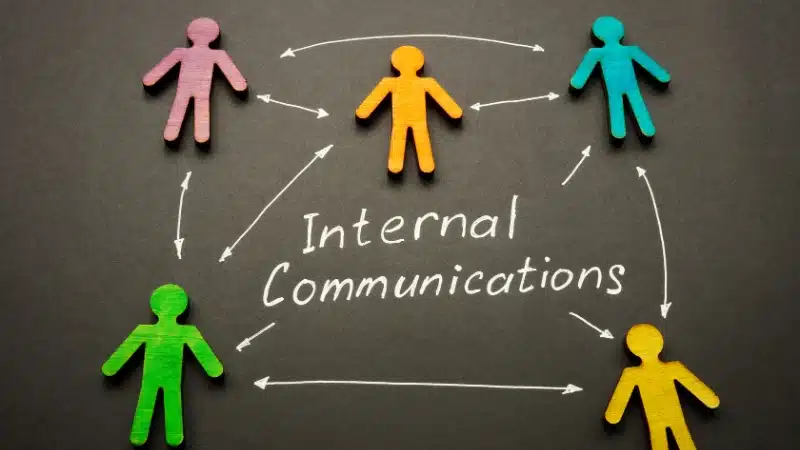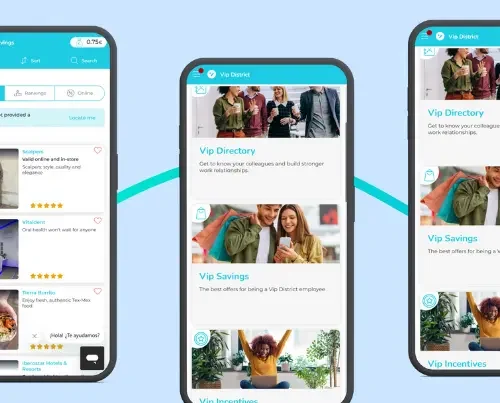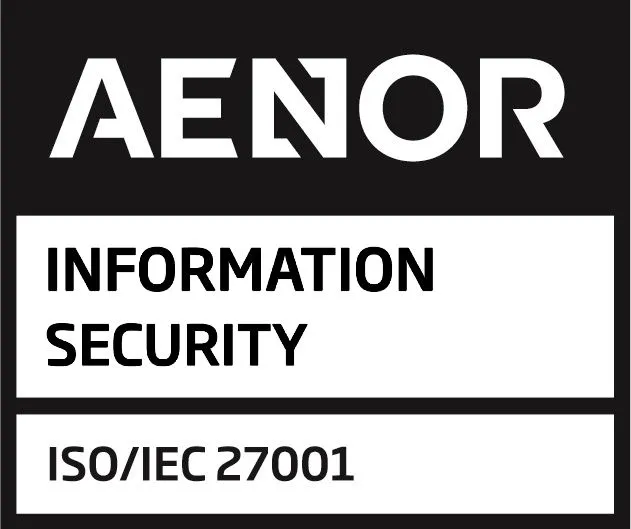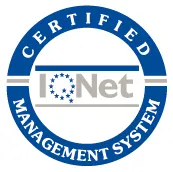
Good internal communication connects people, strategies, and values. Discover how to apply it to enrich the employee experience.
Table of Contents
A motivated team needs clear information, trust in the company, and open channels to express themselves. When these elements are managed consistently, the organization achieves better alignment with its goals and a healthier work climate. In this article, we’ll explore what internal communication is, its most relevant functions, and how to put it into practice with tools and best practices adapted to today’s challenges.
Internal communication: what it is and why it matters today
What’s the point of having a great strategy if employees don’t know about it or don’t feel it as their own? This is the question that highlights the importance of internal communication in any organization.
More than transmitting data, it’s about creating a constant flow of information that gives meaning to daily work and connects people with the company’s goals. When information flows clearly and is easily accessible, teams better understand where the organization is headed, what role they play, and how their effort contributes to collective success.
The Global Human Capital Trends series by Deloitte highlights that transparency is a trust accelerator, especially in times of change: communicating the “what,” the “why,” and the impact of decisions strengthens commitment.
Talking about internal communication also means talking about culture. It not only conveys values and recognizes achievements: it creates an environment where people feel part of a common project. A well-designed strategy improves the work climate, reduces turnover, and strengthens both retention and talent attraction. Initiatives like a well-defined career plan demonstrate commitment to development and build trust.
Functions of internal communication in the employee experience
Internal communication fulfills several essential functions to keep teams connected and motivated. In short, its mission is to inform, connect, listen, and recognize.
- Inform: clearly share what’s happening in the organization, from daily updates to strategic decisions, reducing uncertainty.
- Connect: transmit values and purpose so that each person understands how their work contributes to collective success.
- Listen: enable feedback channels—surveys, meetings, forums—where employees can share ideas and concerns.
- Recognize: highlight achievements and initiatives, reinforcing motivation and creating a positive work environment.
These functions make internal communication a pillar of organizational commitment: when managed consistently, it directly strengthens employee engagement and corporate culture.
From email to mobile: channels and tools to connect with employees
What channels do you really use to reach all employees, including those not sitting in front of a computer? Email is still useful for formal communications, but saturation reduces its effectiveness unless combined with other means. For daily workflows, collaborative spaces and short updates work better, while strategic announcements require formats that provide context and allow later reference.
A well-structured corporate intranet centralizes information, offers self-service content, and reduces email dependence, while also enabling searches and access by profile. For non-office staff—shift workers, retail, logistics, manufacturing—mobile apps and digital signage bring messages in real time. What barriers do these groups face in accessing information, and how can you reduce the friction?
Context also matters: in environments with a high proportion of operational staff, short formats, physical touchpoints, and the support of line managers are often more effective.
Communication channels only have impact when chosen wisely. Identifying the right medium for each message, measuring its reach, and adjusting based on employee response is what turns communication into true organizational dialogue. But choosing the right channel isn’t enough if there’s no message consistency. Here’s where leadership plays a decisive role.
What is internal communication in a company?
Internal communication is the set of processes, channels, and messages that connect employees with the organization. It goes beyond sharing information—it aims to align, motivate, and reinforce company culture.
What are the main internal communication channels?
Common channels include email, intranet, mobile apps, meetings, digital signage, and collaborative platforms. The right choice depends on the workforce profile and company objectives.
What are the benefits of effective internal communication?
It improves employee experience, strengthens belonging, reduces turnover, fosters innovation, and helps attract talent by projecting a strong corporate culture.
Consistency and leadership: when the company speaks with one voice
When was the last time a message reached employees in the same way from management and from the team? That consistency makes all the difference. When both leaders and middle managers deliver the same messages—aligned in tone and content—it creates trust and clarity, even during times of change.
On the other hand, contradictory messages create confusion and weaken perceptions of leadership. Supporting managers with guides, Q&A spaces, or dedicated training makes them essential allies in strengthening a culture of communication.
Tone also matters: an authentic, relatable message adapted to each audience is far more powerful than a generic mass email. An article in The Conversation points out that leadership transparency alone doesn’t guarantee employees will feel safe to speak up, underlining the need to build psychological safety and trust.
Preparing leaders to listen, communicate clearly, and act as role models strengthens the employee experience and boosts the impact of internal communication as a living experience.
Challenges and opportunities of internal communication in the digital age
Digital transformation has completely changed how companies communicate with employees. New channels, information consumption habits, and rising expectations bring challenges—but also opportunities to improve the employee experience.
Today’s key challenges include:
- Information overload: too many emails, chats, and notifications can drown out key messages.
- Disconnection in hybrid settings: remote work and geographic dispersion reduce belonging if not reinforced by shared spaces.
- Generational gaps: some employees prefer mobile apps, while others value documents or meetings—requiring diverse formats.
- Pace of change: fast technological transformation requires continuous adaptation of messages and tools to avoid becoming outdated.
At the same time, digitalization offers new opportunities:
- Personalized messages: tailoring content by role or profile makes information more relevant.
- Real-time measurement: data analytics shows what messages work, allowing quick adjustments.
- Open dialogue spaces: collaborative platforms and digital forums broaden participation and encourage innovation.
- Inclusive access: mobile tools and multimedia formats make it easier to reach operational and mobile employees.
These challenges and opportunities show that digitalization is not about quantity but about purpose and closeness. Choosing the right channels and adapting them to each work reality turns internal communication into a driver of trust in changing environments.
Want to design effective employee surveys? Find out how Vip Connect can help you customise them and optimise your employees’ experience.
Best practices to strengthen dialogue with employees
An internal communication strategy has real impact when it becomes part of daily routines rather than isolated actions. Companies can build trust and commitment through simple but consistent practices such as:
- Surveys and feedback spaces: Regularly gathering employee input helps identify needs and anticipate problems. More than collecting data, the key is turning feedback into action plans and sharing results transparently.
- Visible recognition: Highlighting both individual and collective achievements boosts motivation and strengthens a culture of appreciation. This can be done via internal newsletters, team meetings, or corporate platforms.
- Stories that connect: Sharing real employee stories—new hires, career growth, or social initiatives—brings communication closer to daily life and makes corporate culture more tangible.
- Communication training for leaders: Middle managers are key to delivering messages. Training them to listen, adapt tone, and address questions openly helps maintain coherence across all levels.
- Integration with wellbeing policies: When internal communication aligns with initiatives for work-life balance, health, or professional development, it’s seen as real support for employees’ lives inside and outside of work.
Applying these best practices consistently strengthens dialogue between company and employees, turning internal communication into a tool that not only informs, but also inspires, connects, and generates long-term commitment.
Internal communication is more than a channel for transmitting information: it’s the foundation of trust, belonging, and motivation in teams. A company that communicates clearly reinforces its culture, improves the work environment, and creates a space where people feel their voices matter.
In today’s digital transformation context, these dynamics become even more decisive. Choosing the right channels, listening actively, and preparing leaders as communicators turn internal communication into a strategic lever for cohesion and sustainable growth.
Every message counts: from public recognition to employee surveys, everything shapes how employees perceive their organization. Investing in this area means investing in commitment and wellbeing.
With this approach, internal communication becomes a true engine of sustainable growth. At Vip District, we help companies strengthen this connection with their teams, building trust and a real sense of belonging. Would you like to find out how we can support you on this journey?
New to Vip District? Contact us and find out what our platform has to offer!








